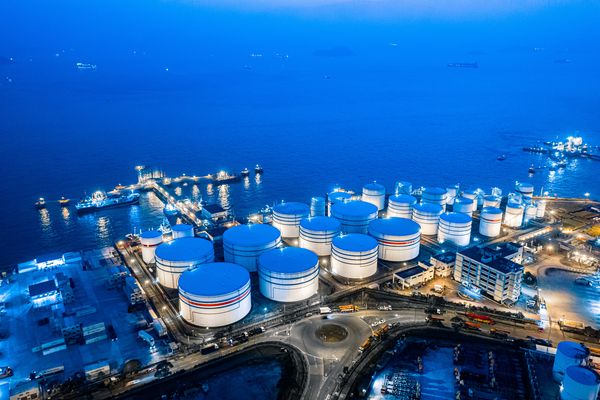The energy industry has always been a cyclical one, and few energy businesses more so than refining. This provides a chance for patient, long-term income investors to generate outsized returns by buying quality companies at their weakest points. Unfortunately for investors interested in refiners, this point has come and gone with several fundamental factors swinging in refiners' favor. This has caused the industry to rally, and now many refiners are hitting new highs. This article attempts to show why long-term investors should not be deterred from purchasing even at these elevated prices, especially when it comes to one particular refiner, which I feel to be a "best of breed."
The recent decrease in refining margins has been primarily caused by two factors: a decline in the West Texas Intermediate/Brent oil spread and increased renewable energy tax credit (RIN) costs. The EPA's recent relaxation of ethanol mixing requirements has caused RIN costs to drastically fall, and while continued WTI/Brent weakness is an ongoing concern for refiners, there are indicators that this key profit driver will increase long-term from recent lows.
The Energy Information Administration predicts that the WTI/Brent spread, which recently bottomed at $0.86/barrel, will increase to $9-$11/barrel during 2014-2015. The expected rise is due to projected increased oil production from shale formations in Oklahoma and Texas outstripping new export pipeline supply (the new TransCanada Marketlink pipeline as well as Enterprise Products Partners' joint venture Seaway pipeline expansion). ,
With the two key negative factors affecting refining improving, margins are expected to improve this year. As a result analysts at Moody's, Barclays, and UBS are predicting refiners will have a great year in 2014.
With the growth runway cleared for stronger profits ahead, there is one refiner in particular that I wish to draw investors' attention to. This is because diversification into higher-margin, non-refining businesses will help it not only beat the overall market in the next year or two but allow for long-term market and peer outperformance.
Phillips 66 (PSX 0.55%) was spun off from ConocoPhillips in 2012 and has proven itself to be a dividend growth investor's dream stock, growing its dividend at a 56.1% compounded annual growth rate. Going forward investors shouldn't expect such torrid growth; but given the 24% payout ratio, the dividend has room to continue growing quickly. However, as I'm about to show, there are strong growth catalysts that are likely to boost the company's earnings and help fuel continued double-digit dividend growth over the long run -- analyst project a 10.4% CAGR through 2023.
Future growth catalysts
Phillips 66 currently operates in three primary areas: refining, midstream oil/gas transportation, and chemicals.
With the refining segment being so cyclical, the company is focusing on diversifying into higher-margin chemicals and midstream segments, both of which have more predictable earnings. This diversification is the key to Phillips 66's long-term outperformance prospects. The company is raising its capital expenditures from $3.7 billion in 2013 ($6 billion in capex investment through 2015) with the majority of investment going toward expanding its midstream and chemical operations.
In the midstream space, the company is the general partner of Phillips 66 Partners (oil-transportation oriented) and holds 50% general partner rights to DCM Midstream (natural gas oriented). The IDR, or incentive distribution rights, fees from these MLPs can be very lucrative. For example, DCM Midstream's 2013 fees to Phillips 66 totaled $53 million and are expected to hit $200 million by 2015. The company is investing $6 billion between 2013 and 2016 to expand its midstream capacity.
However, the biggest opportunity for the company is in liquefied petroleum gas exports. The export demand for LPG is projected to double by 2020, mainly from European fuel demand. The company is investing $3 billion in a fractionator and export terminal near its Sweeny refinery in Texas. This project will be complete in mid-2016 and will be capable of exporting 150,000 barrels per day of LPG, with the company considering a second fractionator unit and splitter to expand capacity further.
With LPG production expected to increase by 79% by 2020, the company's expansion represents just 10% of future capacity increases, thus representing a long growth runway for market share expansion.
Foolish takeaway
Buying great companies at the bottom of a cyclical industry downturn is a fundamental principle of investing; however, that doesn't necessarily mean that buying great companies when they are reaching new highs is a poor investing decision. With Phillips 66, long-term dividend growth investors have a chance to buy into one of the country's most diversified refiners as the industry continues to recover from two major margin-compressing factors. When combined with the company's aggressive investments in midstream capacity and LPG exports (as well as a low dividend payout ratio), the prospects for the company's long-term dividend and earnings growth (and increased earnings stability) are very strong.





